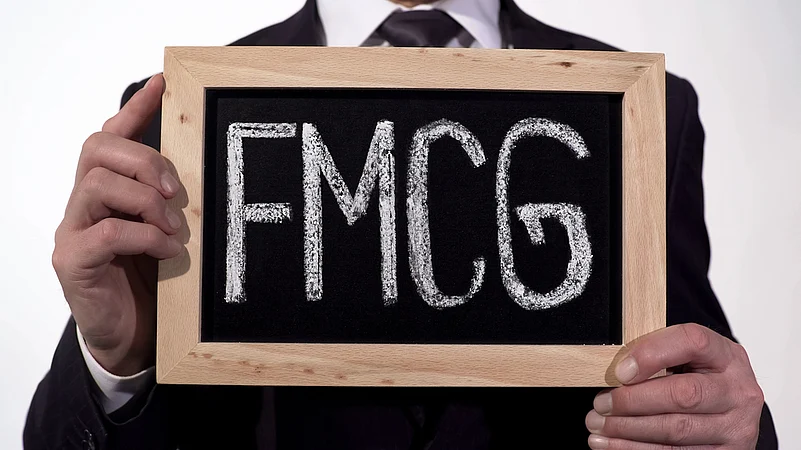Fast-moving consumer goods (FMCG) companies expect to sustain volume growth in the coming quarters, buoyed by recovery of demand in rural markets and good monsoon, despite concerns over growing food inflation.
FMCG majors, including HUL, ITC, Dabur, Britannia, Nestle and Emami, in their June quarter earnings have reported 'green shoots' from the rural markets and strong growth from e-commerce channels, particularly from quick-commerce platforms.
The industry had around 6.6 per cent volume growth in the April-June period of this fiscal. However, companies are worried about elevated food inflation as coffee and cocoa prices have gone up unprecedently. Amid expectations of an increase in cereals and grains prices, some of the players have even indicated price hikes.
Advertisement
Dabur CEO Mohit Malhotra said, "Going forward, the volume will increase on the back of rural inching up for us. So I expect the subsequent quarters to be better than our existing quarters, but definitely not worse."
He expressed optimism, saying that with a good monsoon, improving macroeconomic indicators and rural-centric government spending, FMCG demand will see a gradual uptick.
Malhotra also mentioned inflation in food is very high today and "we might have to take some price increases in food, but it depends upon how the situation is."
Marico MD & CEO Saugata Gupta said the FMCG sector continued to witness gradual improvement in demand trends in the June quarter, with rural growth ahead of urban.
Advertisement
"We expect volume trends to sustain the improving trajectory, aided by stable retail inflation, a healthily progressing monsoon season, and the government's budgetary allocation towards boosting the rural economy," he said.
However, Gupta also added, "elevated food inflation and spatial distribution of rainfall will be key factors to be monitored".
Nestle, in its first quarter earnings statement, said: "Commodity prices are seeing unprecedented headwinds in coffee and cocoa with all-time high prices and an ongoing price rally. Cereals and grains are going through a structural cost increase backed by MSP."
However, the makers of Maggi and KitKat also added there is relative stability in milk prices, packaging and edible oils.
In the June quarter, FMCG makers also reported major gains from the e-commerce segment, in which quick commerce reported higher growth. However, some of them reported a slowdown in traditional channels such as kirana stores in the urban markets.
"We have seen sharp share gains in modern trade, e-commerce and rural, but have however lost share in urban general trade," said Godrej Consumer Products Ltd (GCPL) MD & CEO Sudhir Sitapati.
For Dabur, emerging channels like e-commerce and modern trade posted a robust double-digit growth and now contribute to around 20 per cent of its domestic business.
"E-commerce is flying for us. So it's a growth of around 30 per cent in e-commerce and driven by quick commerce. Quick commerce growth around 70 per cent for us, driven by Zepto, Blinkit, Swiggy, and Instamart," said Malhotra.
Advertisement
According to Malhotra, quick commerce margins are better than e-commerce.
Similarly, Marico's Gupta said quick commerce has a significant upside potential for its growing food business and it is now going to play aggressively in the segment.
HUL also said e-commerce continues to be a "very strong" growth driver for them growing ahead of the market and at three times of its modem trade growth.
"We expect FMCG and rural demand to continue improving gradually," said HUL top management, adding, "we will continue to evaluate strategic opportunity for pricing and expect to be low single-digit positive by end of this financial year."
Advertisement
ITC in its earnings statement said emerging channels such as modern trade, e-commerce, and quick commerce witnessed "robust growth" in its FMCG Other segment, which houses its branded packaged foods such as staples, snacks, meals, dairy and beverages, confections, personal care products etc.
The company, which owns brands like Aashirvaad, Bingo, Yipee and Fiama, said: "Moderating inflation, improving agri terms of trade, expectation of normal monsoons and the government's thrust on public infrastructure and the rural sector augur well for a pick-up in consumption demand, building on the green shoots of recovery that are visible in rural markets."
Britannia Vice Chairman & Managing Director Varun Berry said the FMCG industry has the same growth in value and volume of around 6.6 per cent.
Advertisement
"The rural growths are starting to come back, which have been lagging urban for some time," he said, adding this "will help us overall get better growth."
The reason for the same are better monsoons, moderate inflationary conditions, and an all-time high rural employment. "So things are looking a little better, still not out of the woods completely, but definitely better than what -- where we were," he said.
E-commerce is still very small for the bakery food company, which owns brands as Good Day, Tiger, NutriChoice, Milk Bikis, and Marie Gold, but it has been continuously building its business there, which is giving good results, Berry said.
Advertisement
"We know that it's an important channel, albeit small for us right now, but it's a test bed for innovation and new categories," he said, adding, "it's a channel which can be used by us for a lot of our current premium products as well as making sure that we do products which are actually what the consumers are looking for."
Emami Vice Chairman Mohan Goenka in the first quarter earnings call said rural demand showed gradual improvement with slight green shoots emerging.
In the June quarter, FMCG makers also reported major gains from the e-commerce segment, in which quick commerce reported higher growth. However, some of them reported a slowdown in traditional channels such as kirana stores in the urban markets.
"... the momentum is good. The external factors like monsoon, the rural markets are shining. So we will have to wait and see how the market -- how the numbers come out. But we are optimist that yes we will deliver better than our last year numbers," he said.















 Just one email a week
Just one email a week